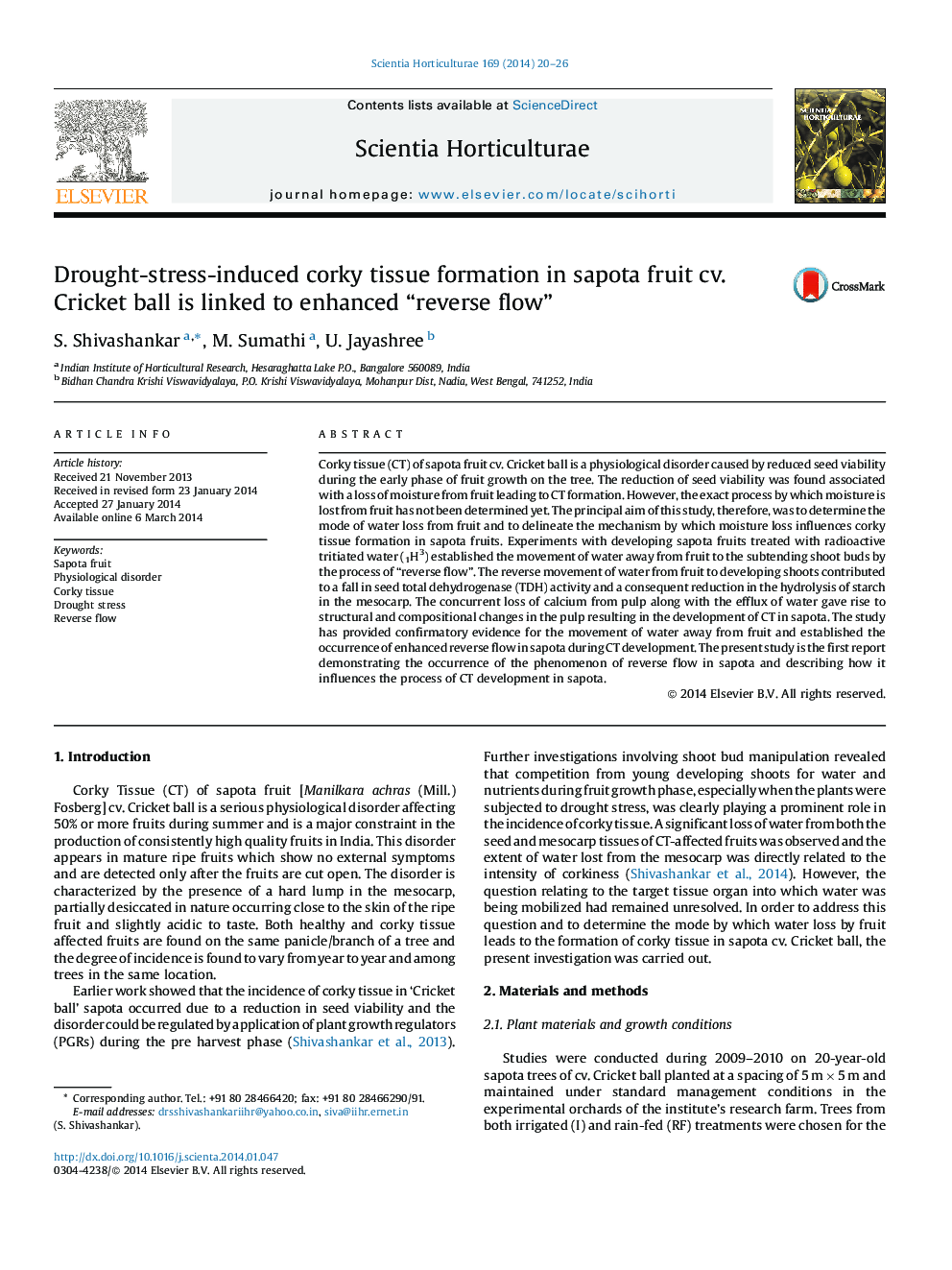| Article ID | Journal | Published Year | Pages | File Type |
|---|---|---|---|---|
| 4566857 | Scientia Horticulturae | 2014 | 7 Pages |
•Occurrence of “Reverse flow” of water from fruit to shoot buds in sapota confirmed.•Increased rate of reverse flow during drought stress contributed to a fall in seed viability.•Loss of seed viability led to calcium and water loss from pulp resulting in CT formation.•The influence of reverse flow on CT development in sapota is firmly established.
Corky tissue (CT) of sapota fruit cv. Cricket ball is a physiological disorder caused by reduced seed viability during the early phase of fruit growth on the tree. The reduction of seed viability was found associated with a loss of moisture from fruit leading to CT formation. However, the exact process by which moisture is lost from fruit has not been determined yet. The principal aim of this study, therefore, was to determine the mode of water loss from fruit and to delineate the mechanism by which moisture loss influences corky tissue formation in sapota fruits. Experiments with developing sapota fruits treated with radioactive tritiated water (1H3) established the movement of water away from fruit to the subtending shoot buds by the process of “reverse flow”. The reverse movement of water from fruit to developing shoots contributed to a fall in seed total dehydrogenase (TDH) activity and a consequent reduction in the hydrolysis of starch in the mesocarp. The concurrent loss of calcium from pulp along with the efflux of water gave rise to structural and compositional changes in the pulp resulting in the development of CT in sapota. The study has provided confirmatory evidence for the movement of water away from fruit and established the occurrence of enhanced reverse flow in sapota during CT development. The present study is the first report demonstrating the occurrence of the phenomenon of reverse flow in sapota and describing how it influences the process of CT development in sapota.
